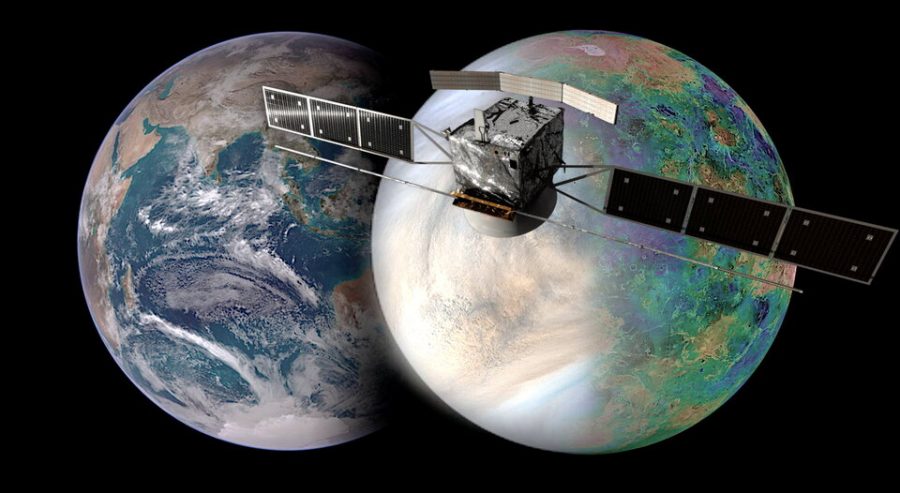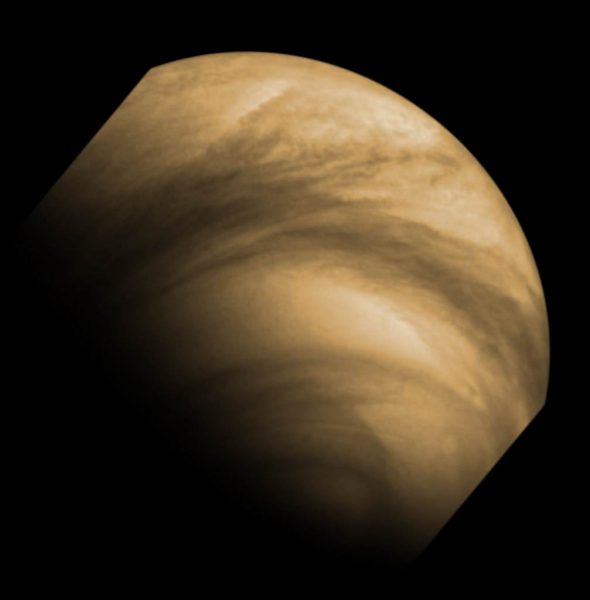ESA’s EnVision mission to Venus adds to the growing number of spacecraft investigating our sister planet. How will they work together to understand our sister planet?

ESA
When the European Space Agency announced that the EnVision orbiter would head to Venus in the early 2030s, the mission became the third in a new crop of spacecraft soon to be bound for our sister planet. NASA's recently selected DAVINCI+ and VERITAS missions are due to launch later this decade.
All three spacecraft aim to address a key question in planetary science: Why are Earth and Venus similar in size but otherwise vastly different worlds in terms of their climate, composition, and geological history? The missions will approach these in different ways.
EnVision will provide a holistic view of the planet's surface, interior, and atmosphere using a suite of instruments: The Venus Synthetic Aperture Radar, provided by NASA and the Jet Propulsion Laboratory, will map the surface; the Venus Subsurface Radar Sounder will probe the planet's interior, and the Venus Spectroscopy Suite will explore the atmosphere. The design of the spacecraft and its science payloads will be finalized in the upcoming Definition Phase (equivalent to NASA's phase B), which starts in 2022.
"The instruments [on EnVision] will work together to best characterize the interaction between the planet's different boundaries — from the interior to surface to atmosphere — providing an all-encompassing global view of the planet and its processes," says ESA Science Director Günther Hasinger.
The main objective of EnVision is to use radar to map targeted areas and regions, with a special focus on unique landscape features such as tesserae, which might have been former continents on Venus.
NASA's VERITAS will provide context for this targeted imaging by using a different frequency of radar as well as near-infrared radiation to make global maps of the surface. Meanwhile, DAVINCI+ will send a probe through the atmosphere, which will provide "ground truth" measurements and complement remote sensing.
Venus: Past, Present & Future
EnVision's atmospheric investigations will follow on ESA’s earlier Venus Express mission, which ended in 2014. Venus Express focused on the chemistry of Venus's atmosphere and its interaction with the solar wind. The Japan Aerospace Exploration Agency’s Akatsuki, now orbiting Venus, has continued the study atmospheric dynamics as of its orbital insertion in 2015.
"EnVision complements and extends the work, of both Venus Express and Akatsuki, of the study of Venus as a planet," Hasinger says.

ESA/MPS/DLR/IDA
EnVision could launch in 2031 for arrival in orbit around Venus in 2034, with the next available launch windows in 2032 and 2033. ESA hopes to launch EnVision on its next generation Ariane-6 heavy lift rocket, set for an inaugural launch in late 2022. DAVINCI+ and VERITAS are set for launch in the 2028–2030 timeframe.
We won’t have to wait a decade to visit Venus, though. The Mercury-bound BepiColombo mission will make a second Venus flyby just 343 miles (552 kilometers) above the Venusian cloudtops next month, on August 10th.
After decades of serving as a planetary backwater, Venus is about to take center stage in a new generation of planetary exploration.
 1
1









Comments
Andrew James
July 9, 2021 at 6:54 pm
A nice information page on the mission science is found here.[1] For me, looking for active volcanism is most interesting investigation of EnVision. [Pity the name EuroVision was already taken!! 🙂 ]
You must be logged in to post a comment.
You must be logged in to post a comment.